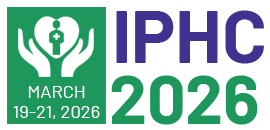Title : Children and workers well-being in French-Speaking primary schools during the COVID-19 pandemic in Belgium
Abstract:
Background: During the COVID-19 pandemic, a significant number of measures were taken worldwide to limit the transmission of SARS-CoV-2, and in many ways, changed human life. All these measures had harmful consequences and impacted the well-being of many people. Children were one of the most vulnerable groups. We conducted the present study to assess children’s and staff’s well-being in Belgian French-speaking primary schools during the COVID-19 pandemic.
Methods: A 37-question questionnaire for each child based on the Revised Children’s Manifest Anxiety Scale (RCMAS), and a 14-question questionnaire for each staff based on the Hospital Anxiety and Depression (HAD) scale was undertaken in order to assess the well-being. Multiple logistic regressions were performed to assess the relationship between RCMAS or HAD and other explanatory variables. Staff reported their perception of their current life and their future life in 5 years on a Visual Analogue Scale.
Results: A total of 231 children and 221 staff in 11 primary schools completed the well-being questionnaire between January and May 2021. 53% (122/231) of children had symptoms of anxiety. Girls reported more anxiety symptoms (≥10: 59%; Adj OR = 2.25; 95% CI [1.28; 4.03]) than boys. 52% (120/231) of children had a definite state of social desirability. The youngest children (6 - 7 years) were more likely to have social desirability (≥5: 71%; Adj OR = 3.44; 95% CI [1.53; 8.09]) than the oldest (10 – 12 years). Children who did not practice outdoor/street activities were more likely to have social desirability (≥5: 60%; Adj OR = 2.59; 95% CI [1.38; 4.99]). Children were more likely to have social desirability in schools with a higher local incidence of SARS-CoV-2 (≥5: 64%; Adj OR = 2.15; 95% CI [1.13; 4.17]). Children were more likely to have social desirability in schools with a lower socioeconomic status (≥5: 72%; Adj OR = 2.74; 95% CI [1.23; 6.37]). 16% (35/221) of staff had a definite state of anxiety. Staff working in larger schools reported less anxiety (≥11: 10% Adj OR = 0.34; 95% CI [0.15; 0.77]). Staff reported lower scores for the perceived life in general during the pandemic than the perceived life in 5 years (r = +0.35).
Conclusion:Our results showed that the well-being of children was impacted during the COVID-19 pandemic. Special attention must be focused on the most vulnerable groups, as the consequences can be catastrophic in the long term.
Audiendence Take Away Notes:
- The COVID-19 pandemic affected and is still affecting most countries worldwide. The well-being is an important aspect to consider as future consequences can have a major impact on children
- Focusing on children’s well-being and helping to improve it can prevent many problems in the future
- Integrating well-being into preventive measures for future pandemics could limit their consequences
- It is important to evaluate and document children’s well-being after the COVID-19 pandemic in order to assess if the decrease in well-being maintains and set up interventions in order to limit consequences later in life



